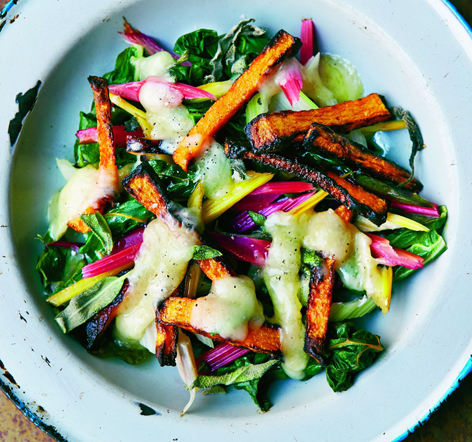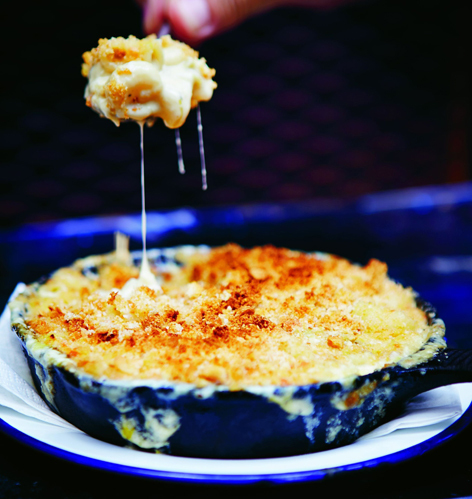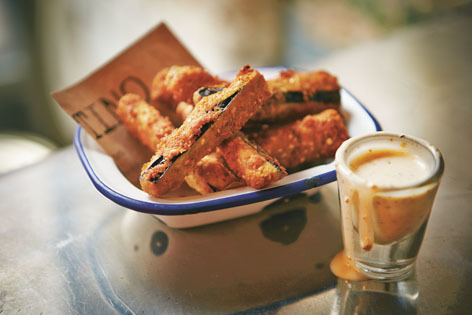There is little doubt that restaurateur Russell Norman is in the right career.
A former head of drama at a girls’ school, for years he worked at restaurants on the weekend, before taking the leap in the late Nineties, eventually going on to set up the popular mini chain of Venetian-inspired Polpo eateries.
“I gave myself a talking to one day and realised I was kidding myself – if I enjoyed restaurants so much at the weekends, why wasn’t that my full-time job?” explains the cook who was born in London and lives with his wife and three children in the city.
“It’s different from how I imagined it. When you work for yourself, your attitude to work changes completely.
“We currently employ nearly 300 people and I feel a daily responsibility, not just for those 300 people but for their dependants, for their husbands and wives and children… but I absolutely enjoy it. I wouldn’t do it if I didn’t.”
Nearly 20 years on from resigning as a teacher, Norman is in his element, with a string of restaurants – including the New York-style Spuntino – and a new cookbook to his name.
Happy to chew the fat about food all day, he regularly “fills up notebooks“ with menu inspiration, and jokes that for someone who cooks Italian food, his mastery of the language is limited to food vocabulary – rather than “asking for directions to the train station”.
Clearly he feeds this enthusiasm into his work, where he has been known to hold competitions in his Spuntino kitchen for finding the longest strings of cheese in their macaroni cheese dish from pan to mouth.
“I’m not the current holder,” laughs Norman, who indulged his love of stringy cheese on holiday to Tuscany where he had “strands of cheese that looked like telephone wires”.
Hearty meals like macaroni cheese form the basis of his new book Spuntino, which celebrates the comforting dishes they serve up on a daily basis.
“These aren’t refined flavours that we have on the menu at Spuntino,” he says.
“We’re not in the realms of delicate ingredients and subtle combination; this is comfort food, nursery food, pure and simple.
“It’s the sort of thing you want to eat when you have a hangover or when you’re really hungry. It’s food that’s about celebrating or enjoying.”
And while his Polpo restaurants resemble the “backstreet wine bars of Venice”, Spuntino is all about the Big Apple.
“I’m going to sound a bit naff here, but there’s a bit in Sex And The City, where Sarah Jessica Parker’s character talks about the additional character of the programme being the city of New York,” he laughs.
“It’s a rather cheesy way of summarising it, but New York does have its own energy. It’s one of those places that really makes you feel good to be alive.”
If you fancy a bite of the Big Apple, here are three comforting dishes from Spuntino…
BUTTERNUT, RAINBOW CHARD AND TALEGGIO
Serves 4
1 small butternut squash
Small handful of sage leaves
2 garlic cloves, finely chopped
Flaky sea salt and black pepper
Extra virgin olive oil
Fine salt
1 bunch of rainbow chard, about 200g, thoroughly washed
200g Taleggio, thinly sliced
Preheat the oven to 200C/Gas 6.
Cut the butternut in half lengthways, scoop out the seeds, then cut the flesh into small to medium ’chips’. Place in a large bowl with the sage leaves, one of the chopped garlic cloves, a few very good pinches of sea salt, a twist of black pepper, and two tablespoons of olive oil.
Turn everything over a few times with your hands to coat the butternut thoroughly, then transfer to a baking tray and put the tray into the oven. After 10 minutes, turn the pieces of butternut over and cook for a further 10 minutes.
Meanwhile, prepare the rainbow chard. Place a pan of salted water over a high heat and bring to the boil. Separate the leaves and the stems. Cut the stems diagonally into bite-sized strips. Cut the leaves into quarters.
Once the water has come to the boil, add the stems and cook for one minute, then add the leaves and boil for a further 30 seconds. Remove from the water and squeeze out any excess liquid. Place into a large mixing bowl and add a good few glugs of olive oil, a pinch of salt and pepper and the remaining chopped garlic clove. Turn several times to coat the chard well.
Once the butternut comes out of the oven, place the chard on top and then slices of Taleggio. Return to the oven for two minutes, so that the cheese has just started to melt.
Carefully transfer to serving plates. This lovely warm salad is best eaten immediately.
MAC & CHEESE
Serves 6
250g macaroni pasta
Fine salt
250ml whole milk
450ml double cream
175g grated Parmesan
250g grated mozzarella – the hard, cheap kind
1.5tbsp Dijon mustard
2 leeks
25g butter
2 garlic cloves, finely chopped
Flaky sea salt and black pepper
75g panko breadcrumbs (made from bread without crusts)
85g grated Fontina
Bring a large pan of water to a rolling boil, add the pasta and some fine salt, and stir. When the water boils again, turn down to a medium heat and follow the instructions on the packet, usually simmering for around 11 minutes. Drain when al dente.
Once cooled, transfer the drained pasta to a large mixing bowl and add the milk, the double cream, 125g of the Parmesan, half of the mozzarella and the Dijon mustard. Mix together thoroughly and leave to soak for two hours.
Meanwhile, trim the leeks by removing and discarding the green tops and the roots, and finely chop. Wash the chopped leeks thoroughly to get rid of any grit. Place a medium pan over a low heat, melt the butter and very gently sweat the leeks with the garlic, four large pinches of flaky sea salt and a good pinch of black pepper.
After about 10 minutes, the leeks will have a translucent, glossy appearance. Take off the heat and leave to cool. Once the leeks have cooled, drain off any lingering fluid and add them to the soaking pasta.
Mix the breadcrumbs with the remaining Parmesan and set aside.
Preheat the oven to 200C/Gas 6. Add the grated Fontina and the remaining mozzarella to the pasta dish and combine well. Transfer the mix to a large baking dish or six individual dishes and cover with the breadcrumb and Parmesan mix.
Bake in the preheated oven ’til golden brown and bubbling, for 25 minutes if using one large dish, or 15-20 minutes if using individual dishes.
EGGPLANT CHIPS WITH FENNEL YOGHURT
Serves 6-8
2tsp coriander seeds
2tsp fennel seeds
2 eggplants (aka aubergines)
100g plain flour
1tsp fine salt
0.5tsp black pepper
3-4 medium eggs
150g panko breadcrumbs (made from bread without crusts)
2tsp sesame seeds
1 litre vegetable oil, for deep frying
For the Fennel Yoghurt:
1tsp coriander seeds
1tsp fennel seeds
125g mayonnaise
200g plain Greek-style yoghurt
1tsp lemon juice
Large pinch of flaky sea salt
Pinch of black pepper
First of all, toast the coriander and fennel seeds for both the aubergine and the yoghurt. Put them all – three teaspoons of each – in a non-stick frying pan and dry fry over a medium heat for a few minutes, until you can smell their spiciness. Do keep an eye on them, as they can easily burn. Remove from the heat, then grind in a pestle and mortar.
Now make the fennel yoghurt. Take two teaspoons of the ground seeds and combine with the rest of the fennel yoghurt ingredients. Put it in the fridge.
Cut the eggplant into thick 10cm-long chips.
Now take three bowls. Mix the flour, salt and pepper in the first. In the second bowl, beat the eggs. Mix together the breadcrumbs, the remaining ground coriander and fennel seeds and the sesame seeds in the third bowl. Dip the eggplant chips in the flour, coating well, shake off any excess and then place in the egg wash, shaking off any drips, and then coat well with the breadcrumbs. Set aside at room temperature, not in the fridge, if not cooking straightaway.
Heat the vegetable oil in a medium pan to 190C (or until a cube of bread dropped in the oil turns golden brown in less than a minute). Now fry the coated eggplant chips, in batches, for two to three minutes or until golden brown. Lift out, drain on kitchen paper and sprinkle with a little salt. Serve hot with the chilled fennel yoghurt.
Spuntino by Russell Norman is published in hardback by Bloomsbury



